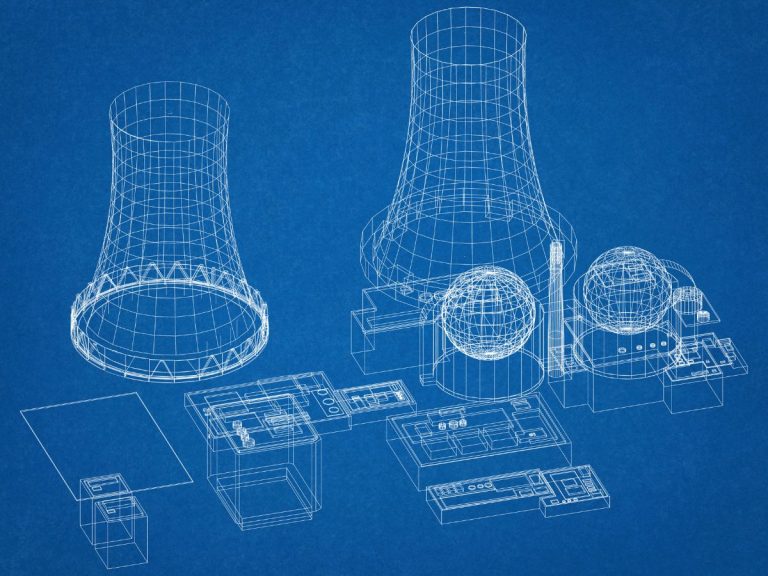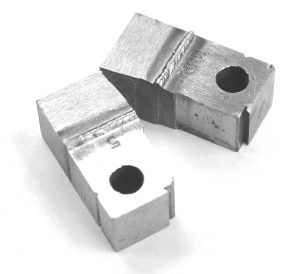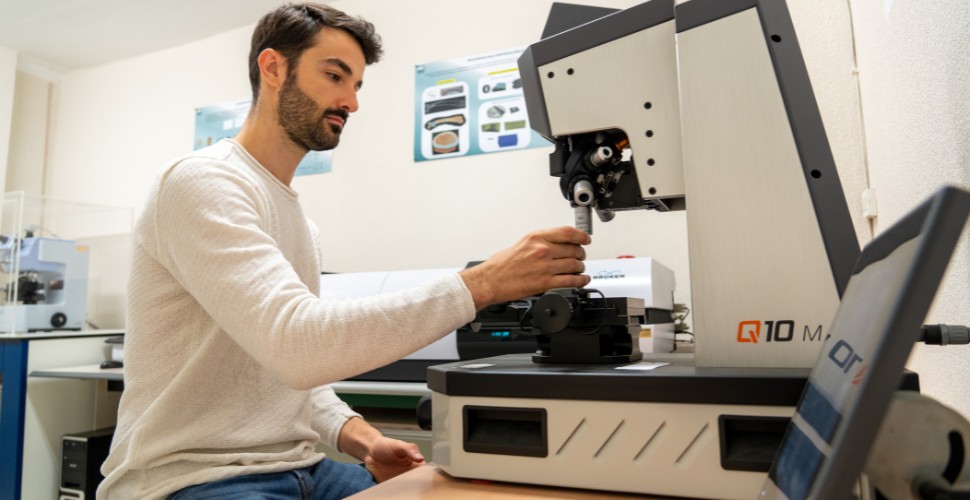LADICIM develops predictive models based on AI to extend the useful life of nuclear power plants in the United States
A prestigious american engineering has commissioned the Cantabrian Laboratory to carry out a study to generate a worldwide database that improves the level of knowledge of the evolution of nuclear vessels
The Laboratory of the Materials Science and Engineering Division is promoting a line of research related to the application of Artificial Intelligence in the fight against climate change. The latest milestone has allowed research work to be taken to a new level focused on finding solutions to extend the useful life of nuclear power plants, which LADICIM has been developing for more than 25 years.
A prestigious North American engineering (whose name is protected by confidentiality clauses) has just hired LADICIM to generate a worldwide database that improves the level of knowledge of the evolution of nuclear vessels and develop advanced predictive models -based on AI- to better predict how its fragilisation will change over time. An unprecedented challenge since, to date, no global study had been carried out.
The project, called ‘Analytical study for the development of a trend curve for neutron embrittlement of nuclear reactors based on reference temperature data Master Curve’, has a budget of around 200,000 euros and has a two-year execution period.

It has public financing through an independent organization and non-profit company based in the US dedicated to research, development and innovation in the field of electrical energy. It is an entity that carries out investigations for all North American nuclear power plants covering a wide variety of topics: maintenance, safety, radioactive waste management, advanced reactor technology and risk assessment, among others.
In this case, analyzing large amounts of historical data and integrating Artificial Intelligence in the development of behavioral models of nuclear vessels-made of steel- will allow to identify patterns and trends about its fragility and deterioration, which will help improve the understanding of these phenomena and more accurately predict possible problems in the future.
“Partial work has been done on this, the information is dispersed and the challenge is to be able to compile all the information that is available, process it and use Data Analytics tools that allow us better understand the loss of mechanical characteristics of steel of the vessels when they are subjected to the radiation generated by the nuclear fuel,” explains Diego Ferreño, professor at the University of Cantabria and researcher at LADICIM. “By better understanding how they deteriorate, we will be able to have a more precise view of their evolution and, consequently, we will be able to more accurately predict the extent to which they can continue to operate safely and effectively in the future”.
Master Curve Method vs Charpy Essay
The United States is one of the main players in the nuclear industry with around 93 reactors in operation, distributed in 56 different plants. The North American country represents approximately 22% of all operational nuclear power plants globally, which is 436. Most reactors operating around the world are approaching the end of their originally designed lifespan. By 2050, it is expected that up to half of them could enter a definitive shutdown regime.
Nuclear reactors have implemented surveillance programs to track the degradation of their materials and, in particular, the vessel steel. Charpy impact test has been the general traditional technique used to evaluate the characterization of the fragility neutronics. At the end of the 20th century, emerged a technique specific and essential in the field of nuclear engineering: the Master Curve method, based in fracture tests performed over a wide range of temperatures, providing an evaluation more accurate and reliable of the tenacity of the materials.

LADICIM researchers will combine the Master Curve method, traditional analytical techniques and predictive models based on Artificial Intelligence algorithms to improve the ability to predict the useful life and behavior of materials in nuclear environments.
Between 1985 and 2010, the cantabrian laboratory developed experimental and analytical work for the Santa María de Garoña Nuclear Power Plant and showed that the Burgos plant, closed in 2012 after 41 years of operation and currently in the process of dismantling, could have operated for more than 80 years without any structural problem in the vessel derived from damage by neutron irradiation.
The dedication and experience in the field of nuclear energy has turned LADICIM into an international reference in this important area of research.
The 'data culture', key to nuclear research
The controversy surrounding nuclear energy and the maintenance of nuclear power plants is due to multiple and complex factors. In a context of climate change, global energy transition and the search for sustainable solutions, policies and decisions vary according to the situation and priorities of each country. Nuclear energy is characterized by being clean and low in carbon emissions and many voices defend that it can play a significant role in the fight against climate change. “All scenarios that contemplate producing clean electrical energy imply not only the maintenance of nuclear energy, but also an increase in the power produced. The ruling is very clear,” emphasizes Ferreño.
The critical stances point out concerns about the probability of incidents, the sustainable management of radioactive waste, the risk of nuclear weapons proliferation, and the socioeconomic and environmental aspects associated with nuclear technology.
In this environment of concerns about safety, costs, energy alternatives and sustainability, the ‘data culture’ and the application of AI play a prominent role in the sector. Having a large set of historical, reliable and accurate data is essential to ‘feed the models’ and achieve the best predictions about the behavior of steel vessels. And this is where appears one of the main challenges faced by LADICIM: the lack of information transfer by some countries in relation to the operation of their plants, including Spain.
“Twenty countries have made a total transfer, the base is good but incomplete. If we had detailed information, our data set would be significantly enriched, which would allow us to improve the quality of our algorithms. As more data is added to our database, we will proceed to retrain it, thus achieving a more accurate and reliable prediction”, explains Diego Ferreño.

The vessel is the only irreplaceable element of the reactor and knowing in depth its evolution and the factors that affect the fragility of steel is important to guarantee the safety and proper functioning of the nuclear plant. “Data from older plants is especially valuable. We do not know the chemical composition of the steels in some vessels and it is essential information for understanding their resistance and behavior. That’s why transparency is so valuable.. The safety margins are very high, but the more knowledge we have, the more accurate the predictions will be”.
The more and better the information that AI algorithms analyze and manage, the better the predictive models they develop. Predicting how materials will behave over time involves, among other things, understanding in depth their physical and chemical properties, analyzing the environment and the conditions of use to which they are exposed or studying how phenomena such as corrosion or oxidation affect their wear.
Since 2020, LADICIM has been part of the ENTENTE European project, aimed at developing and exploiting an european database to provide relevant information on the structural integrity of nuclear power plant components and to develop AI-based models to predict the evolution of materials. The results are clear: the improvement in prediction capacity has allowed uncertainty to be reduced by 21%.
“Those who have tried to do it using mathematical formulas have realized that it is very difficult to predict the deterioration experienced by the nuclear reactor vessel due to the radiation to which it is subjected. In the last 20 years, the improvements were one or two percent. Instead, “when we use AI algorithms we predict much more accurately”.
Financed with 4 million euros, it implies 27 partners from 12 countries, under the leadership of the Center for Energy, Environmental and Technological Research (CIEMAT). Institutions and companies participate alongside the Laboratory leaders in the field of energy such as French Electricity (EDF), SKC from Belgium or the CRIEPI from Japan, and regulatory entities and manufacturers of the nuclear sector.



